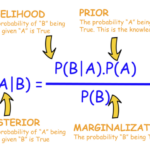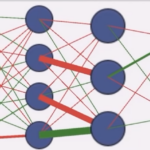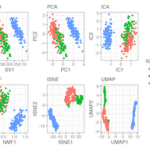LLMs: Raise of Customization
Today we’re diving deep into the fascinating world of Large Language Models (LLMs) and, more importantly, how to bend them to our will. We’ve all heard of these impressive AI behemoths like GPT-3 and LaMDA, churning out human-quality text, translating languages like a pro, and even writing different kinds of creative content. But here’s the thing: out-of-the-box LLMs are like a raw block of marble. Powerful, sure, but it takes sculpting to reveal their true potential.
So, how do we transform these generic giants into custom-built tools for our specific needs? The answer lies in LLM customization, and trust me, it’s not as daunting as it sounds.
The Big Picture: Customization Strategies
First things first, let’s map out the territory. There are several approaches to customizing LLMs, each with its own strengths and trade-offs:
Prompt Engineering & Prompt Learning: This is where we act as LLM whisperers, crafting just the right prompts and instructions to nudge the model towards the desired output. It’s like giving directions to a highly skilled, but slightly clueless assistant. Think of it as a low-resource approach, perfect when data is scarce and the task at hand is relatively simple. And for those who want to take it a step further, prompt learning comes into play. This involves refining and optimizing those prompts, either through trial and error or even automated algorithms, leading to even better results.
Parameter-Efficient Fine-Tuning: Now, imagine you could give your LLM a specialized training course without retraining the entire thing from scratch. That’s the magic of parameter-efficient fine-tuning. Techniques like adapters and LoRA (Low-Rank Adaptation) let us inject small “customization modules” into the model, adapting it to new tasks without messing with the core architecture. It’s a happy medium between efficiency and effectiveness, ideal when you have a decent amount of data and a variety of tasks in mind.
Fine-Tuning: This is the heavyweight champion of customization. We take the existing LLM and further train it on a new dataset that’s laser-focused on our specific task. It’s like taking a general-purpose tool and sharpening it into a precision instrument. Sure, it requires significant data and computational muscle, but the payoff is immense, especially for complex tasks like multilingual translation or generating different creative text formats.
Zooming In: Specific Techniques and Their Use Cases
Now, let’s get down to the nitty-gritty. Within each customization strategy, we have a toolbox of specific techniques:
In the Realm of Prompt Engineering:
Few-Shot Learning: Ever wish you could learn a new skill with just a few examples? That’s what we do here, providing the LLM with a handful of demonstrations to guide it towards the desired outcome. Perfect for those data-scarce situations where you still have a clear idea of what you want.
Chain-of-Thought Reasoning: Humans don’t just jump to conclusions; we reason step-by-step. Chain-of-thought prompting encourages LLMs to do the same, providing the input along with the reasoning process leading to the answer. This is particularly useful for tasks that require logical deduction or solving multi-step problems.
System Prompting: Think of this as setting the ground rules for your LLM. We provide instructions or context right at the start, influencing the model’s behavior throughout the task. Want to maintain a specific style or ensure the LLM adheres to certain guidelines? System prompting is your friend.
Diving into Parameter-Efficient Fine-Tuning:
Prompt Tuning: Here, we don’t directly modify the model’s weights. Instead, we focus on optimizing the prompts themselves, making them more effective in guiding the LLM’s responses. This is like finding the perfect words to unlock the LLM’s potential.
LoRA (Low-Rank Adaptation): This technique involves injecting trainable “adapter” modules into the LLM without changing the original weights. It’s efficient and works wonders for tasks like text summarization, style transfer, and question answering.
Matching the Right Tool to the Job
Of course, choosing the right customization technique depends on the task at hand:
Summarization: Need concise summaries? LoRA is your go-to for efficient fine-tuning on summarization datasets. And if you want summaries with a specific flair, few-shot learning can guide the model towards different styles.
Question Answering (Q&A): Few-shot learning is a lifesaver when Q&A data is limited. For those brain-teaser questions that require reasoning, chain-of-thought prompting steps up to the plate. And when dealing with open-domain Q&A, LoRA can boost accuracy and ensure factual consistency.
Creative Writing: This is where prompt engineering shines. System prompting sets the tone and style, while few-shot learning provides examples of the desired format, whether it’s poems, scripts, or anything in between.
The Future is Bright (and Customizable)
The ability to customize LLMs is a game-changer. It opens up a world of possibilities, from tailoring AI assistants to specific domains to creating new forms of creative expression. And as research advances and tools become more accessible, we can expect to see more user-friendly tools and techniques that empower even non-experts to tailor LLMs to their specific needs. The ability to customize these powerful models opens up a world of possibilities, allowing us to unlock their full potential across diverse domains and applications.





